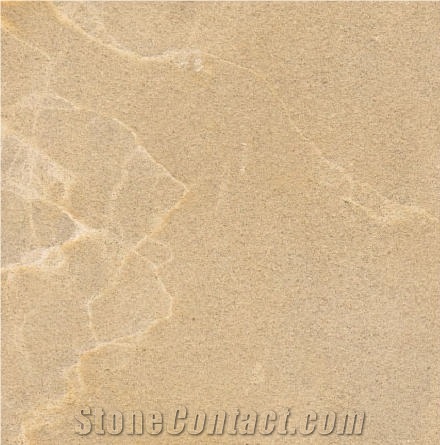Can Poland's Plagwitzer Sandstein Sandstone be used exterior applications in very windy climates?
Polands Plagwitzer Sandstein Sandstone can be used in exterior applications in windy climates, but it may have certain limitations and considerations.
Plagwitzer Sandstein is a type of sandstone characterized by its durability, hardness, and resistance to weathering agents. However, it is important to note that wind can contribute to the erosion and degradation of natural stone materials over time. In very windy climates, there are a few factors to consider:
1. Wind-driven particles: Strong winds often carry particles such as dust, sand, and other debris that can hit and abrade the surface of the sandstone, causing it to wear over time. This can result in a loss of the stones original appearance.
2. Moisture and freeze-thaw cycles: Wind can increase the likelihood of moisture infiltration into the sandstone. In regions where freeze-thaw cycles occur, the trapped moisture can freeze and expand, potentially leading to cracks and other damage.
To mitigate these potential issues, additional protective measures can be taken:
1. Surface sealants: Applying a high-quality breathable sealant to the sandstone can help reduce the absorption of water and wind-driven particles, thereby minimizing the potential damage caused by wind.
2. Regular maintenance: Regular cleaning and inspection of the sandstone are necessary to remove any buildup of dirt, dust, or debris that may accumulate due to wind. This will help preserve the stones original appearance and prevent any premature deterioration.
3. Proper installation and detailing: Appropriate installation techniques, such as using proper mortar and adequate moisture barriers, can help minimize the impact of wind-driven moisture.
Overall, while Polands Plagwitzer Sandstein Sandstone can be used in exterior applications in windy climates, it is important to take these factors into account and implement proper maintenance and protective measures to ensure its longevity. Consulting with professionals experienced in working with sandstone in windy environments is advisable to ensure the best outcome.
Polands Plagwitzer Sandstein Sandstone can be used in exterior applications in windy climates, but it may have certain limitations and considerations.
Plagwitzer Sandstein is a type of sandstone characterized by its durability, hardness, and resistance to weathering agents. However, it is important to note that wind can contribute to the erosion and degradation of natural stone materials over time. In very windy climates, there are a few factors to consider:
1. Wind-driven particles: Strong winds often carry particles such as dust, sand, and other debris that can hit and abrade the surface of the sandstone, causing it to wear over time. This can result in a loss of the stones original appearance.
2. Moisture and freeze-thaw cycles: Wind can increase the likelihood of moisture infiltration into the sandstone. In regions where freeze-thaw cycles occur, the trapped moisture can freeze and expand, potentially leading to cracks and other damage.
To mitigate these potential issues, additional protective measures can be taken:
1. Surface sealants: Applying a high-quality breathable sealant to the sandstone can help reduce the absorption of water and wind-driven particles, thereby minimizing the potential damage caused by wind.
2. Regular maintenance: Regular cleaning and inspection of the sandstone are necessary to remove any buildup of dirt, dust, or debris that may accumulate due to wind. This will help preserve the stones original appearance and prevent any premature deterioration.
3. Proper installation and detailing: Appropriate installation techniques, such as using proper mortar and adequate moisture barriers, can help minimize the impact of wind-driven moisture.
Overall, while Polands Plagwitzer Sandstein Sandstone can be used in exterior applications in windy climates, it is important to take these factors into account and implement proper maintenance and protective measures to ensure its longevity. Consulting with professionals experienced in working with sandstone in windy environments is advisable to ensure the best outcome.
 Poland
(Skala, Bolesławiec, Kreis Lwówek Śląski, Niederschlesien, Lower Silesia)
Poland
(Skala, Bolesławiec, Kreis Lwówek Śląski, Niederschlesien, Lower Silesia)













